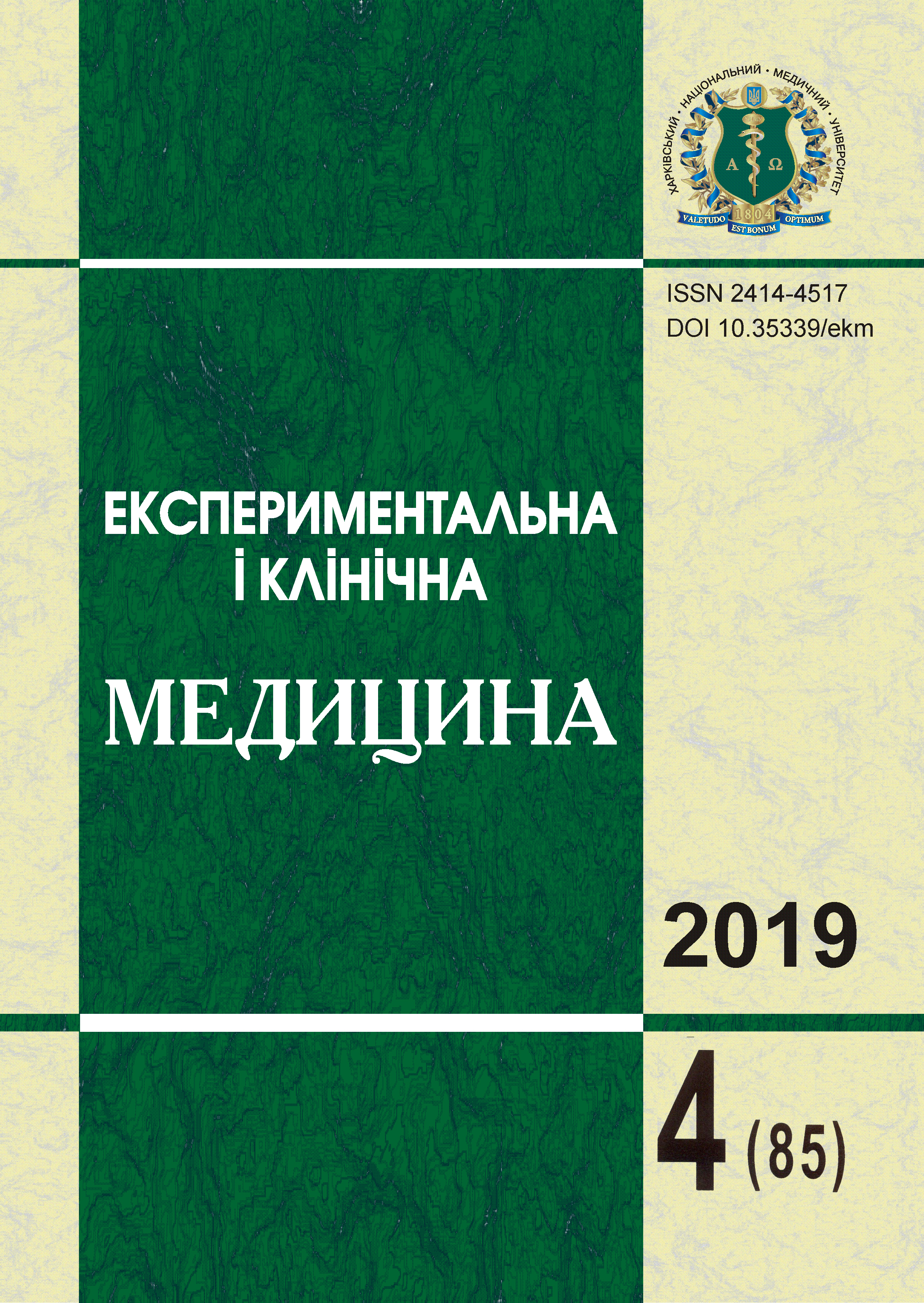Abstract
To study the effect of limb reperfusion in a model of combined abdominal-skeletal trauma and massive blood loss on histological changes of the knee joints. The experiment used 40 adult white male Wistar rats weighing 190-220 g, which were on a standard diet of vivarium. The experimental animals who modeled closed abdominal trauma, skeletal trauma, massive external blood loss, and ischemia-reperfusion of the lower extremities. The studies were performed 21 days after trauma modeling. All trauma experiments were performed under thiopental sodium (40 mg·kg-1 mass). The closed femoral bone fracture was modeled by applying a single metered blow to a specially designed thigh device. Closed trauma to the abdominal organs was modeled by applying two metered blows to the abdominal cavity with a specially designed device. Massive external blood loss was modeled by blood flow from 20 to 22 % of circulating blood volume from the femoral vessels on the opposite side of the femur fracture. Lower limb ischemiareperfusion was simulated by imposing hemostatic plaits on the proximal portions of the lower legs of the test animals for two hours. In the preparations of the tissues of the hip and knee joint tissue reactive changes characteristic of inflammatory processes was found: pronounced changes in the hyaline cartilage of the metepiphyseal plate of the joints, edema of the connective tissue, disruption of the ordered arrangement of the insert plates of the compact part of the bone, significant vascular disorders in the form of arteries, edema of the adventitious sheath of vessels was noted. Thus, it was determined that combined trauma combined with ischemia reperfusion of the lower extremities in the later periods after the traumatic period can cause reactive changes in the large joints of the lower extremities.
References
Oyeniyi B.T., Fox E.E., Scerbo М. et al. (2017).Trends in 1029 Trauma Deaths at a Level 1 Trauma Center. Injury, vol. 48 (1), pp. 5-12.
Karladani A., Granhed H., Karrholm J. et al. (2001). The influence of fracture etiology and type on fracture healing: a review of 104 consecutive tibial shaft fractures. Archives of Orthopaedic and Trauma Surgery, vol. 121 (6), pp. 325-328.
Park S.H., Silva M., Bahk W.J. et al. (2002). Effect of repeated irrigation and debridement on fracture healing in an animal model. Journal of Orthopaedic Research, vol. 20 (6), pp. 1197-1204.
Bunn R.J., Burke G., Conelly C. et al. (2005). Inflammation - a double edged sowrd in high-energy fractures. The Bone & Joint Journal, vol. 87 (3), pp. 265-266.
Abbey C. Thomas, Tricia Hubbard-Turner, Erik A. Wikstrom et al. (2017). Epidemiology of Posttraumatic Osteoarthritis. JAthl Train., vol. 52 (6), pp. 491-496.
Johnson V.L., Hunter D.J. (2014). The epidemiology of osteoarthritis. Best Pract Res Clin Rheumatol., vol. 28, pp. 5-15.
Bahaa Ali Kornah, Hesham Mohamed Safwat, Said K. Abdel-hameed et al. (2019). Managing of post-traumatic knee arthritis by total knee arthroplasty: case series of 15 patients and literature review. Journal of Orthopaedic Surgery and Research, vol. 14, pp. 1-9.
Van Tienderen R.J., Dunn J.C., Kusnezov N., Orr J.D. (2017). Osteochondral allograft transfer for treatment of osteochondral lesions of the talus: a systematic review. Arthroscopy, vol. 33 (1), pp. 217-222.

